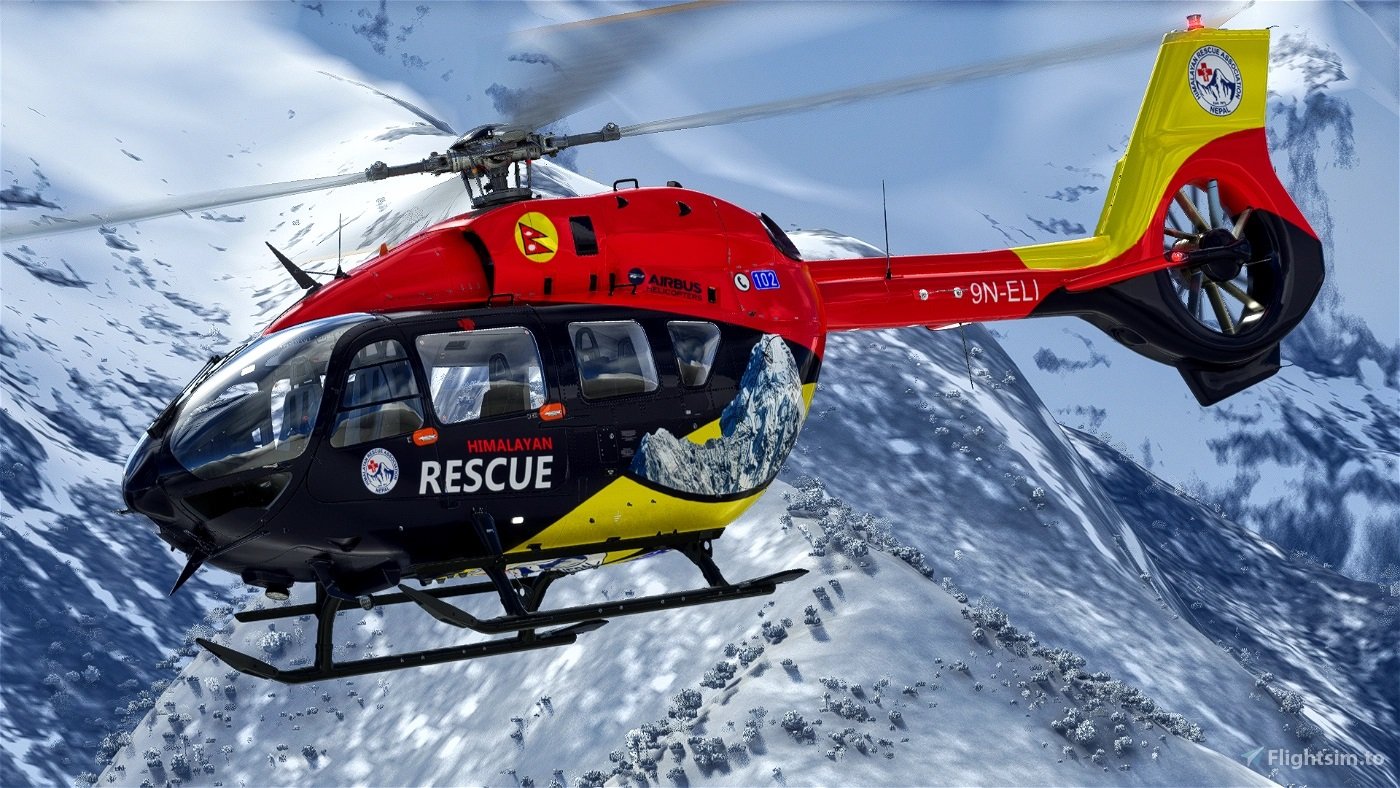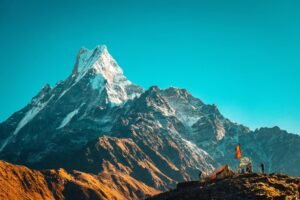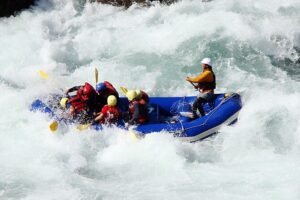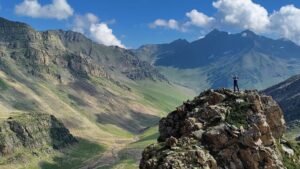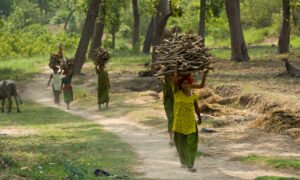The Himalayas, often referred to as the “abode of snow,” are not just a majestic mountain range but also one of the most challenging and perilous regions on Earth. Climbers from around the world are drawn to its peaks, seeking to conquer its summits and test their limits. However, the harsh weather conditions, treacherous terrains, and high altitudes can quickly turn these adventures into life-threatening situations. Over the years, numerous rescue missions in the Himalayas have showcased extraordinary bravery, skill, and the indomitable human spirit. This article delves into some of the most famous Himalayan rescue missions, highlighting the courage and tenacity of the rescuers and the rescued.
1. The 1996 Everest Disaster
One of the most well-known and tragic events in the history of Himalayan climbing is the 1996 Everest disaster. On May 10-11, a severe blizzard struck Mount Everest, trapping several climbers near the summit. The disaster claimed the lives of eight climbers and was later immortalized in Jon Krakauer’s book “Into Thin Air.”
Background
In 1996, commercial expeditions to Everest were becoming increasingly popular. This led to a surge in the number of climbers attempting to summit the world’s highest peak, resulting in congestion on the mountain. Several expeditions, including those led by Rob Hall of Adventure Consultants and Scott Fischer of Mountain Madness, were among those affected by the disaster.
The Disaster Unfolds
The weather on May 10, 1996, started relatively clear, encouraging climbers to make their final push to the summit. However, by the afternoon, conditions began to deteriorate rapidly. A massive blizzard struck the mountain, bringing with it gale-force winds and sub-zero temperatures. Visibility dropped to near zero, and climbers became disoriented.
Several climbers, including Rob Hall, Doug Hansen, Yasuko Namba, and Scott Fischer, were caught in the storm near the summit. Beck Weathers, another climber, was left for dead multiple times but miraculously survived.
The Rescue Efforts
Despite the harsh conditions, several rescue efforts were launched. Among the heroes was Anatoli Boukreev, a Russian-Kazakhstani mountaineer. Boukreev, despite the storm and exhaustion, made multiple solo rescue trips to save stranded climbers. His efforts were instrumental in saving the lives of several climbers, including Beck Weathers and Yasuko Namba.
Boukreev’s actions were later scrutinized and debated within the climbing community, with some questioning his decision to descend ahead of his clients and not using supplemental oxygen. However, his bravery in facing the storm to save others was undeniable.
The disaster highlighted the perils of high-altitude climbing and the critical importance of timely decision-making and proper acclimatization. The 1996 Everest disaster remains a poignant reminder of the mountain’s unforgiving nature.
2. The 2008 K2 Tragedy
The second-highest mountain in the world, K2, also known as the “Savage Mountain,” witnessed one of the deadliest accidents in climbing history in August 2008. An ice avalanche triggered a series of events that led to the deaths of 11 climbers.
Background
K2, located in the Karakoram range, is renowned for its technical difficulty and severe weather conditions. In August 2008, climbers from multiple expeditions were attempting to summit the mountain. The climbers had to navigate the Bottleneck, a narrow and steep gully covered by unstable ice seracs.
The Disaster Unfolds
On August 1, as climbers were descending from the summit, an ice avalanche occurred in the Bottleneck. The avalanche destroyed fixed ropes, leaving many climbers stranded without a clear path for descent. The chaos and confusion that followed led to a series of tragedies.
Several climbers were killed by falling ice or became stranded at high altitudes. Those who survived faced severe frostbite, exhaustion, and the imminent threat of another avalanche.
The Rescue Efforts
Marco Confortola, an Italian climber who survived the incident, played a crucial role in the rescue efforts. Despite suffering from severe frostbite, Confortola helped organize and participate in the rescue of other climbers stranded at high altitudes. The Pakistani military also launched a helicopter rescue mission, which was critical in saving the lives of several climbers.
The rescue mission on K2 was hampered by the mountain’s remote location and extreme weather conditions. Helicopters could only operate at lower altitudes, requiring climbers to descend significant distances on their own. The survivors’ accounts of the tragedy revealed the sheer complexity and danger of high-altitude rescues.
3. The 2014 Annapurna South Rescue
Annapurna, one of the deadliest peaks in the Himalayas, witnessed a massive avalanche in October 2014, resulting in the deaths of 43 people, including trekkers and guides. The avalanche, triggered by heavy snowfall from Cyclone Hudhud, caught many climbers off guard.
Background
Annapurna’s trekking circuit is popular among trekkers for its stunning scenery and challenging routes. However, the mountain is notorious for its high fatality rate. In October 2014, an unexpected snowstorm caused by Cyclone Hudhud struck the region, leading to avalanches and blizzards.
The Disaster Unfolds
The sudden and severe weather conditions trapped hundreds of trekkers and climbers along the Annapurna Circuit. Many were ill-prepared for the intensity of the storm, which dumped several feet of snow in a short period.
Trekkers faced freezing temperatures, low visibility, and the constant threat of avalanches. Some sought refuge in tea houses, while others were stranded in the open.
The Rescue Efforts
The Nepalese army, local guides, and international rescue teams launched a massive rescue operation. Helicopters were deployed to search for survivors and retrieve bodies. The rescue teams faced extreme weather conditions, but their relentless efforts saved many lives. The coordination between various agencies and the bravery of the rescuers were widely praised.
One of the significant challenges during the rescue was the altitude and the vast area that needed to be covered. Helicopters made multiple sorties, often in treacherous flying conditions, to bring stranded trekkers to safety. The use of satellite phones and GPS technology played a crucial role in locating survivors.
The 2014 Annapurna disaster underscored the importance of accurate weather forecasting and the need for trekkers to be adequately prepared for sudden weather changes. The tragedy also highlighted the critical role of local guides and their extensive knowledge of the terrain.
4. The 2019 Nanda Devi East Rescue
In May 2019, a team of climbers led by experienced British mountaineer Martin Moran went missing on Nanda Devi East, the second-highest peak in India. The team, which included climbers from the UK, the US, and India, was attempting a new route on the peak when disaster struck.
Background
Nanda Devi East, located in the Garhwal Himalayas, is part of the Nanda Devi massif, which includes the highest peak entirely within India. The region is known for its challenging climbing conditions and remote location. Martin Moran’s team aimed to pioneer a new route on the peak, which had not been attempted before.
The Disaster Unfolds
The team of eight climbers went missing after an avalanche struck their route. When the climbers failed to return to their base camp as scheduled, concerns grew, and a search and rescue operation was initiated.
The Rescue Efforts
The Indian Air Force launched a significant rescue operation involving advanced helicopters and search teams. Due to the difficult terrain and adverse weather conditions, the rescue mission faced several challenges. Despite the efforts, the bodies of the missing climbers were found days later. The operation highlighted the risks involved in high-altitude rescues and the dedication of the rescuers.
The rescue teams had to navigate treacherous terrain and unpredictable weather to locate the missing climbers. The use of aerial reconnaissance and satellite imagery helped identify potential areas where the climbers might be found. The rescue mission demonstrated the critical importance of international cooperation and the role of technology in modern search and rescue operations.
5. The 2021 Avalanche in Uttarakhand
In February 2021, a glacier burst in Uttarakhand’s Chamoli district led to massive flooding and an avalanche, causing widespread devastation. The disaster resulted in the deaths of over 200 people, including workers at the Tapovan hydroelectric plant.
Background
The Chamoli disaster was triggered by the collapse of a part of the Nanda Devi glacier, which caused a massive surge of water and debris to flow down the Rishiganga and Dhauliganga rivers. The sudden and intense flooding destroyed bridges, roads, and infrastructure, cutting off access to several villages.
The Disaster Unfolds
The avalanche and floodwaters swept away everything in their path, including workers at the Tapovan hydroelectric plant and residents of nearby villages. The scale of the disaster was unprecedented, and the region was thrown into chaos.
The Rescue Efforts
The Indian Army, Indo-Tibetan Border Police (ITBP), and National Disaster Response Force (NDRF) launched a large-scale rescue operation. The teams worked tirelessly to search for survivors, provide medical aid, and restore connectivity in the affected areas. The use of advanced technology, such as drones and thermal imaging cameras, played a crucial role in the rescue efforts.
Rescue teams faced significant challenges, including blocked roads, unstable terrain, and harsh weather conditions. Helicopters were used to airlift stranded people to safety, and relief camps were set up to provide food, shelter, and medical care to the affected population.
The Uttarakhand avalanche disaster highlighted the vulnerability of mountainous regions to climate change and the need for robust disaster preparedness and response mechanisms. The coordinated efforts of multiple agencies and the bravery of the rescuers were instrumental in mitigating the impact of the disaster.
Challenges of Himalayan Rescues
Rescue missions in the Himalayas are fraught with challenges. The extreme altitudes, harsh weather conditions, and difficult terrains make these operations highly complex and dangerous. Some of the key challenges include:
- Altitude Sickness: Rescuers and the rescued are often susceptible to altitude sickness, which can impair judgment and physical abilities.
- Weather Conditions: The weather in the Himalayas can change rapidly, with storms, blizzards, and avalanches posing significant risks to rescue teams.
- Logistical Difficulties: The remote locations and rugged terrains make it challenging to transport equipment and personnel to the rescue sites.
- Limited Resources: Many Himalayan regions have limited access to advanced medical facilities and rescue equipment, complicating the rescue operations.
- Communication Barriers: The mountainous terrain can hinder communication, making it difficult to coordinate rescue efforts effectively.
- Cultural and Language Differences: Rescuers often have to work with local communities and international teams, navigating cultural and language barriers.
Technological Advancements in Himalayan Rescues
Over the years, technological advancements have significantly improved the efficiency and success rates of rescue missions in the Himalayas. Some notable advancements include:
- Helicopters: High-altitude helicopters equipped with advanced navigation and rescue equipment have revolutionized mountain rescues, enabling quick and efficient evacuations.
- Drones: Drones equipped with thermal imaging and high-resolution cameras are used for aerial surveys, locating stranded climbers, and assessing avalanche risks.
- Satellite Communication: Satellite phones and GPS devices have improved communication and coordination during rescue missions, ensuring timely assistance.
- Portable Hyperbaric Chambers: These chambers help treat altitude sickness and other high-altitude medical conditions, providing critical care during rescues.
- Weather Forecasting Technology: Advanced meteorological tools and models help predict weather changes, enabling better preparation and timely alerts.
- Rescue Apps and Software: Specialized apps and software assist in mapping, tracking, and coordinating rescue operations, enhancing efficiency and accuracy.
The Human Spirit and Himalayan Rescues
The success of many Himalayan rescue missions can be attributed to the indomitable human spirit, courage, and determination of the rescuers. These brave individuals often risk their own lives to save others, showcasing extraordinary heroism and selflessness. Their stories of resilience and bravery inspire and remind us of the incredible feats humans are capable of in the face of adversity.
Rescue missions often involve local Sherpas and mountaineers who possess unparalleled knowledge of the terrain and climbing conditions. Their expertise and willingness to assist in rescue operations are invaluable. International rescue teams also bring specialized skills and equipment, demonstrating the importance of global cooperation in mountaineering rescues.
The Himalayas, with their awe-inspiring beauty and formidable challenges, continue to attract adventurers and climbers from around the world. While the risks are significant, the spirit of exploration and the desire to conquer these mighty peaks persist. The famous rescue missions in the Himalayas serve as a testament to human courage, resilience, and the relentless pursuit of survival. As technology advances and rescue techniques improve, the hope is that future rescues will be more successful, ensuring the safety of those who dare to venture into these majestic mountains.
The tales of heroism and survival in the Himalayas are not just about the mountains themselves but about the people who brave their dangers, driven by a spirit of adventure and a commitment to helping others. These stories remind us that even in the most challenging and perilous situations, the human spirit can shine brightly, overcoming immense odds to achieve the seemingly impossible.
4o

